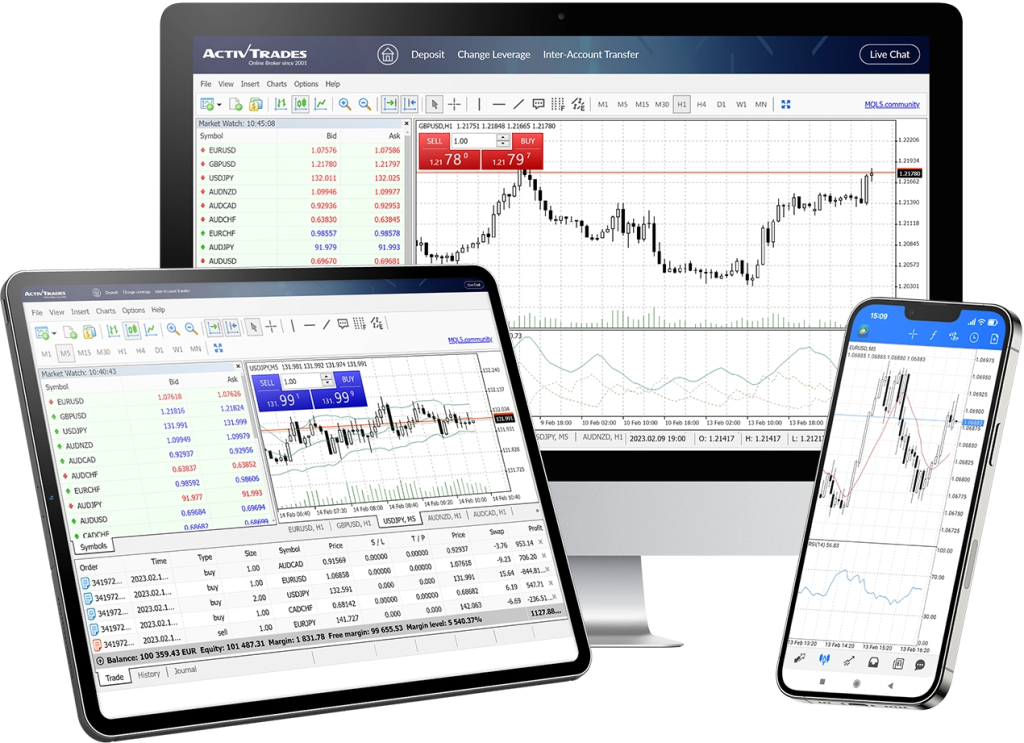Spreads from 0.007 on Natural Gas
No hidden fees for opening or closing trades
ETF CFDs allow for both long and short positions
All client deposits are insured and held in segregated accounts
With customer satisfaction rate over 95%
Your profits are instantly available to you at all times

Trade forex on our exclusive next generation trading platform


| EURUSD | GBPUSD |
| USDJPY | and more |

| EURUSD | GBPUSD |
| USDJPY | and more |

| EURUSD | GBPUSD |
| USDJPY | and more |

| EURUSD | GBPUSD |
| USDJPY | and more |

| EURUSD | GBPUSD |
| USDJPY | and more |

| EURUSD | GBPUSD |
| USDJPY | and more |

| EURUSD | GBPUSD |
| USDJPY | and more |
ActivTrades clients can take advantage of a wide variety of market scenarios and outcomes.
ActivTrades currently offers CFDs on five types of spot commodities, but also 14 highly tradable commodity futures that allow you to express a commodity view, both long and short, in a much more targeted and sophisticated way.
Brent crude futures, brent crude (spot), copper futures, gold (spot), platinum (spot), silver (spot), diesel futures, gasoline futures, light Crude futures (WTI), Light Crude (WTI spot), and natural gas futures.
Cocoa futures, coffee futures, cotton futures, orange juice futures, corn futures, soybean futures, sugar futures, and wheat futures.
As you can see, ActivTrades customers enjoy the ability to be far more surgical in their commodities positioning, due to the larger number of tradable assets. This has stood our traders in good stead throughout the pandemic and beyond as there have been many opportunities on both the long and short side in commodity markets due to the supply chain disruptions that the global economy has had to endure.
The global markets require that the commodities they list are standardized so that any unit can be interchangeable and of equal quality with any other.
In the case of crude oil, the sulphur, wax, and metal content of a type of crude oil can vary greatly from another. This can make it harder and costlier to refine certain crude oils into the petrol used to power consumer vehicles.
A region’s crude oil can be measured for quality and compared to that of a different region, and over the years, different benchmark grades have developed.
WTI (LCRUDE) is extracted from the North American Permian basin, whereas Brent crude is extracted from over a dozen wells in the North Sea of England. These offshore wells are harder and costlier to mine, which causes Brent crude to trade at a slight premium as compared to WTI.
Commodity markets are crucial to the global economy because they determine the price of all the raw materials that go into the manufacturing of finished goods, but also their refining and distribution.
Thanks to the US dollar’s reserve currency status, commodities are priced in US dollars on the global markets, this means that a strong dollar makes commodities cheaper, and a weak dollar makes commodities more expensive. Perhaps central to all the commodity complexes is energy.
Today, gold is traded as a safe haven, investors flock to it at times when confidence is low in the prospects of the global economy, as well as when inflationary fears surface. The fact that the US dollar is also used as a safe haven, sometimes complicates this relationship, so it’s often useful to chart gold against currencies other than the US dollar when wanting to find out how it has truly performed.